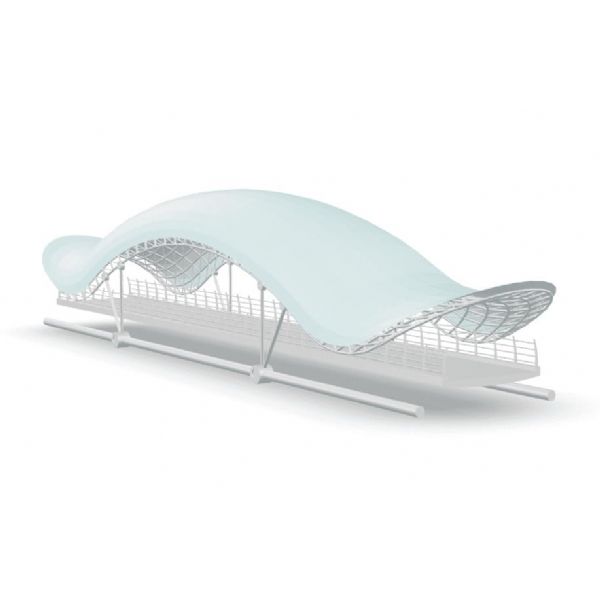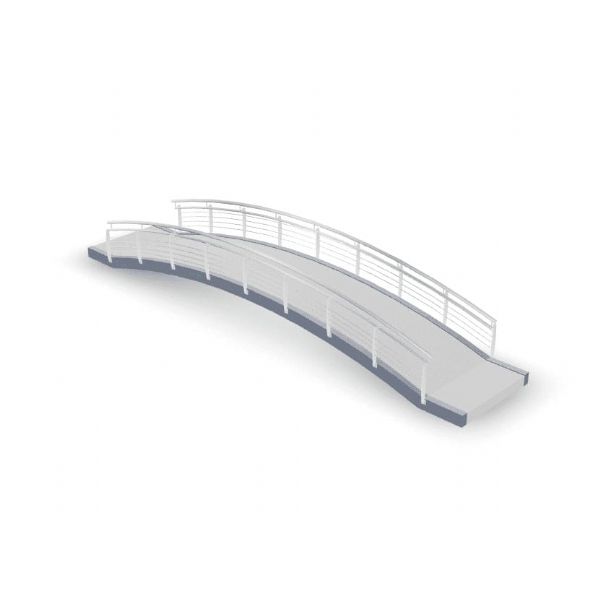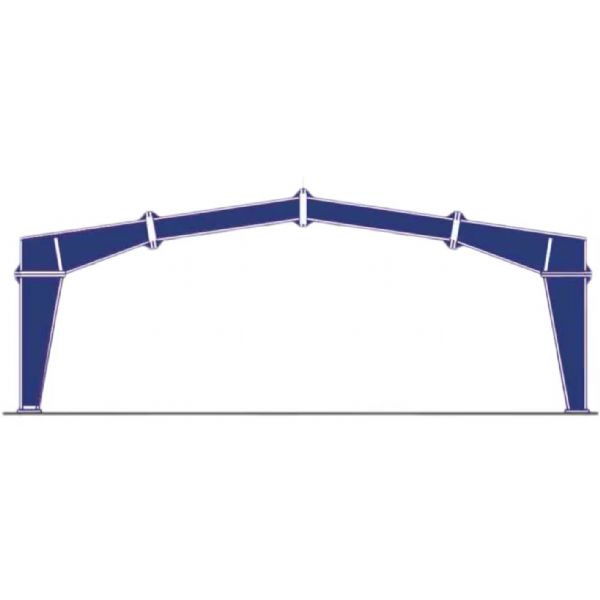Today’s world-famous bridges, such as Nanjing Yangtze River Bridge, Sydney Harbour Bridge, Golden Gate Bridge, Brooklyn Bridge, Tsing Ma Bridge, Great Belt Bridge, and Akashi Kaikyo Bridge have their own history, but all of them are essentially types of steel structure bridges. Kaikyo Bridge, all of them have their own history, but all of them are essentially steel bridges.
This article will conduct an in-depth discussion on the types, characteristics, application scenarios, etc., of steel structure bridges and combine the engineering practice of XTD Steel Company to demonstrate its basic knowledge in the design, construction, and maintenance of steel structure bridges so that everyone can have a comprehensive understanding of steel structure bridges and provide a useful reference for the development of the industry.
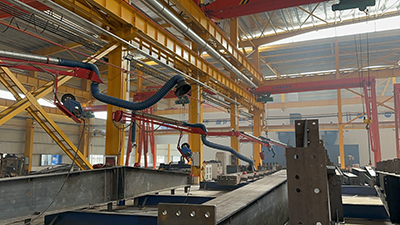
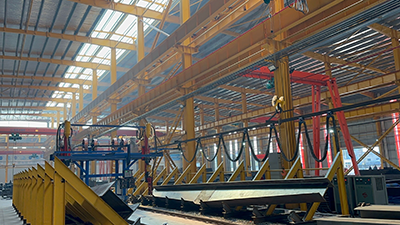
[Photo source: XTD Steel Structure Factory No. 6]
1. Why use steel structures for bridge construction? Benefits and considerations explained
Benefits and Key Considerations
Steel structures have become a preferred solution in modern bridge construction due to their unique combination of strength, durability, and efficiency. Compared with traditional concrete bridges, steel bridges offer multiple advantages that significantly improve construction speed, reduce costs, and enhance adaptability. However, they also come with specific considerations that designers and engineers must carefully evaluate.
1. Prefabrication and Cost Efficiency
One of the most important advantages of steel structure bridges lies in the high degree of prefabrication. Most of the primary components—such as girders, trusses, and support elements—are manufactured in controlled factory environments. This prefabricated assembly approach minimizes reliance on on-site production facilities, which typically require extensive resources such as flat working areas, stable power supplies, gas, and other utilities.
By shifting the bulk of the work into a factory setting, project teams benefit from better quality control, optimized resource use, and reduced waste. More importantly, the efficiency of prefabrication significantly shortens the overall construction timeline. The reduced need for extensive on-site setups translates into direct cost savings, making steel structure bridges a competitive choice in both urban and rural infrastructure projects.
2. Rapid On-Site Installation and Minimal Disruption
Another remarkable advantage of steel bridges is their rapid installation capability. Once the prefabricated sections arrive at the construction site, they can be assembled and erected in a short time frame. This rapid process is particularly valuable in busy urban environments where minimizing traffic disruption is critical.
For example, on highways or city arterial roads, prolonged construction often leads to congestion and inconvenience for residents. Steel bridges, by contrast, can be lifted and installed using cranes and specialized equipment within hours or days, rather than weeks or months. This efficiency reduces traffic control requirements, lowers labor costs, and minimizes the impact on surrounding communities. Additionally, the shortened construction time inherently reduces exposure to safety hazards, making job sites safer for workers and the public alike.
3. Durability and Corrosion Resistance
Steel as a material has excellent mechanical properties, offering high tensile strength, ductility, and resilience under dynamic loads such as heavy vehicles and environmental stresses. When treated with anti-corrosion coatings or galvanization, steel bridges demonstrate strong resistance to weathering, rust, and long-term degradation. This ensures that steel bridges can perform reliably even in demanding environments, such as coastal regions or industrial zones, where exposure to moisture and pollutants is common.
4. Fire Resistance as a Key Consideration
Despite their many advantages, steel bridges do present some challenges, particularly in terms of fire resistance. Steel’s structural strength decreases rapidly at elevated temperatures, which can compromise the stability of the bridge in the event of a fire. For this reason, additional fire protection measures must be integrated into the design.
Solutions include applying fire-retardant coatings, installing fireproof cladding, and conducting regular inspections to monitor for damage or deterioration. By incorporating these safeguards, the potential risks associated with fire can be effectively managed, ensuring the long-term safety and resilience of the structure.
5. Balancing Benefits with Practical Requirements
In summary, steel structure bridges combine speed, efficiency, and durability, making them an attractive choice for modern infrastructure projects. Their prefabrication reduces construction costs and time, while their rapid assembly minimizes disruption in high-traffic areas. Corrosion resistance adds to their long-term value. However, engineers must also account for limitations such as reduced fire resistance and ensure that appropriate protective measures are included in the design phase.
When balanced thoughtfully, the benefits of steel structure bridges far outweigh the challenges, solidifying their role as a cornerstone of contemporary bridge construction and infrastructure development.
2. What are the types of steel structure bridges? And what are their advantages?
Steel structure bridges
Steel structure bridges are the most viable structural bridges after concrete bridges. Their advantages are that they are made of steel, so they have high strength and can achieve large spans and slimmer designs. They are also easy to maintain and have low requirements for transportation and installation.
Steel structure corridors
Steel structure corridors are usually used in commercial, residential, public, industrial, and bridge engineering buildings. Their design and construction can reflect the quality and details of the building. They can improve the utilization rate and convenience of space through reasonable design and layout. Compared with traditional concrete structures, steel structure corridors have better seismic performance, providing higher security for the safety of buildings.
Rigid frame bridges (rigid frame bridges)
Rigid frame bridges are a structural system of beams and arches. They are generally used in urban bridges with small spans, viaducts, and highway overpasses. This type of bridge has a very low building height, is very suitable for overpasses and elevated line bridges, etc., and is more economical in materials.
Top-supported steel arch bridge
The arch column of the top-supported steel arch bridge is the main load-bearing structure. When bearing loads, the arch column will generate axial pressure. The reasonable design of the arch axis makes its force more dispersed and uniform to cross the wide river surface or valley obstacles effectively. In addition, this type of bridge has a beautiful shape, a large span, a wide view of the bridge, a simple structure, and convenient construction.
Special-shaped steel structure overpass
Special-shaped steel structure overpass is an irregular bridge that is no longer limited to traditional straight lines or simple geometric shapes but is more inclined to be greatly twisted, wavy, circular, or a variety of combined shapes. These unique styles can often become landmark buildings in the city, enhancing the city’s landscape and urban culture.
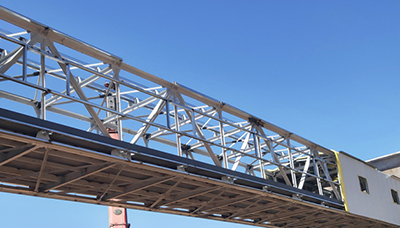
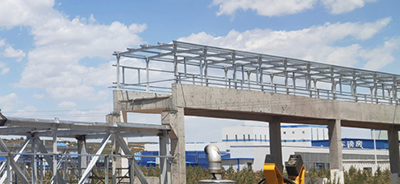
3. What are the differences between different steel structures? In what scenarios can they be used?
3.1 Application Scenarios
- Steel structure bridges are suitable for use in large highway and railway bridges (for example, steel structures such as China’s Wuhan Yangtze River Bridge connect the city’s two sides to ensure the smooth passage of many vehicles).
- Steel structure corridors are used in commercial complexes. They have different shops and functional areas, facilitating the flow of people between different areas inside the building.
- Rigid frame bridges are suitable for use on small cross-street viaducts in cities. They do not need to take up too much space to allow vehicles and pedestrians to cross smoothly.
- Top-supported steel arch bridge: suitable for use on highways, railways, and urban roads, as well as across obstacles such as rivers and valleys.
- Special-shaped steel structure overpass: suitable for use in transportation hubs or areas with large passenger flow and complex traffic (such as around subway stations, railway stations, etc.) to guide pedestrians to pass through complex sections more safely and efficiently.
3.2 Difference
Differences in materials: Steel structure bridges mainly use high-strength steel, which has good tensile, compressive, and ductility properties and can withstand large loads. At the same time, the strength and toughness of steel give it better seismic resistance in bridges.
Service life: Under normal maintenance conditions, the service life of a steel structure bridge can reach 50 years or even longer, but this life depends on the effectiveness of anti-corrosion measures and the frequency of maintenance.
Flexible design: Steel bridges excel in aesthetics and design flexibility. Their high strength and plasticity allow for more innovative designs, creating visually impactful bridge appearances, such as arcs, suspension cables, and cable-stayed structures.
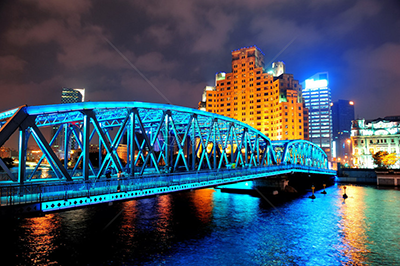
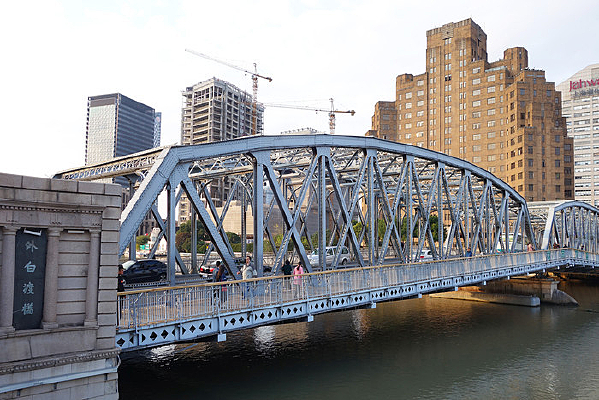
[Photo source: Garden Bridge of Shanghai]
Summarize
Steel structures are increasingly favored in modern bridge construction because of their outstanding advantages in strength, efficiency, and adaptability. Their lightweight yet durable nature allows bridges to span longer distances with fewer supports, enabling more open and flexible designs. The high degree of prefabrication also ensures faster on-site installation, reducing construction time, cost, and disruption to surrounding traffic—an essential benefit in busy urban areas.
In terms of application, steel structure bridges play a vital role in both urban development and road transportation. They provide reliable connectivity across rivers, highways, and railways while withstanding heavy loads and harsh environmental conditions. By combining durability, rapid assembly, and design flexibility, steel bridges not only enhance the efficiency of infrastructure projects but also support the sustainable growth of cities and transport networks.



